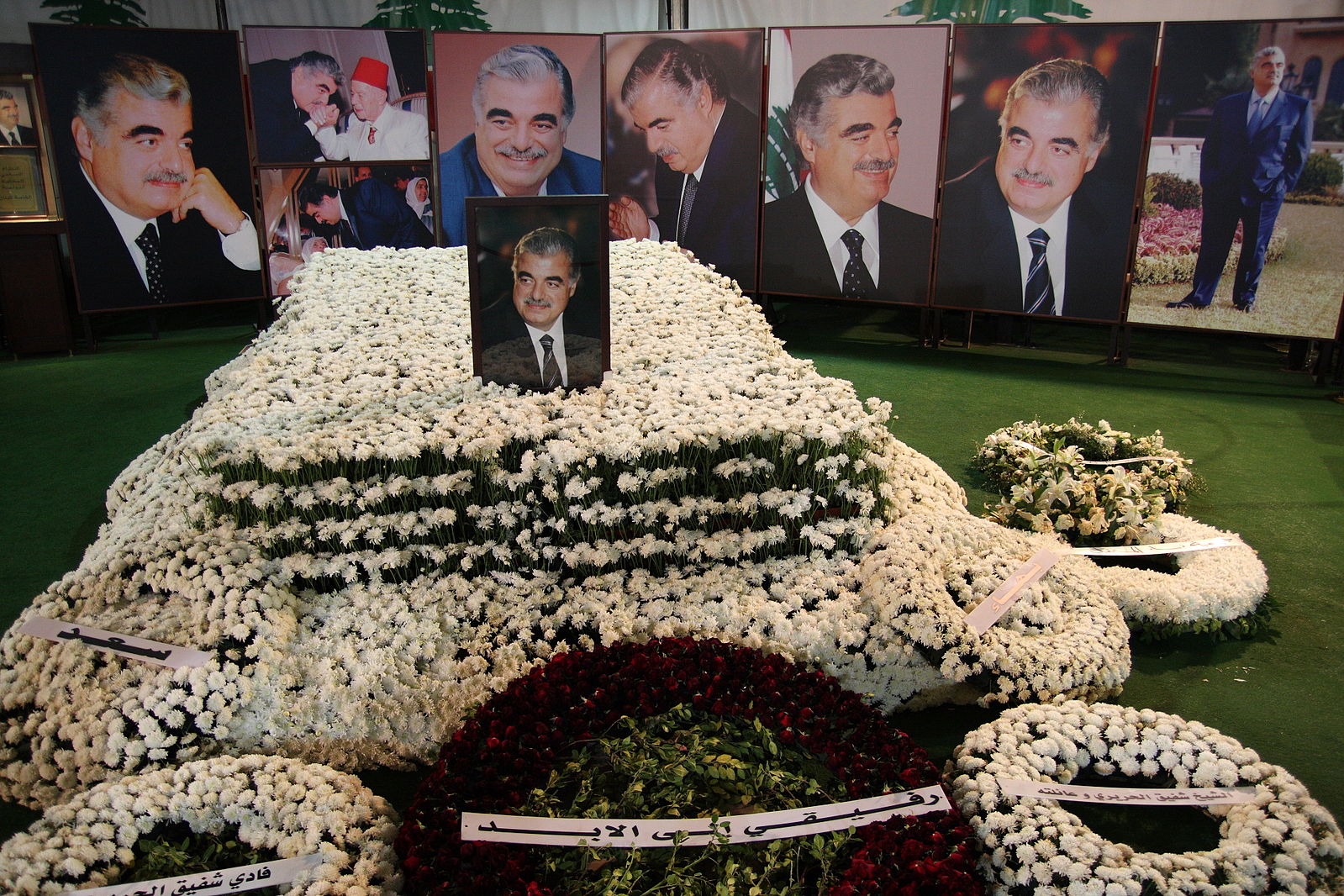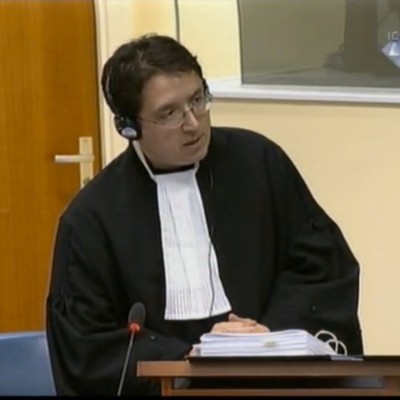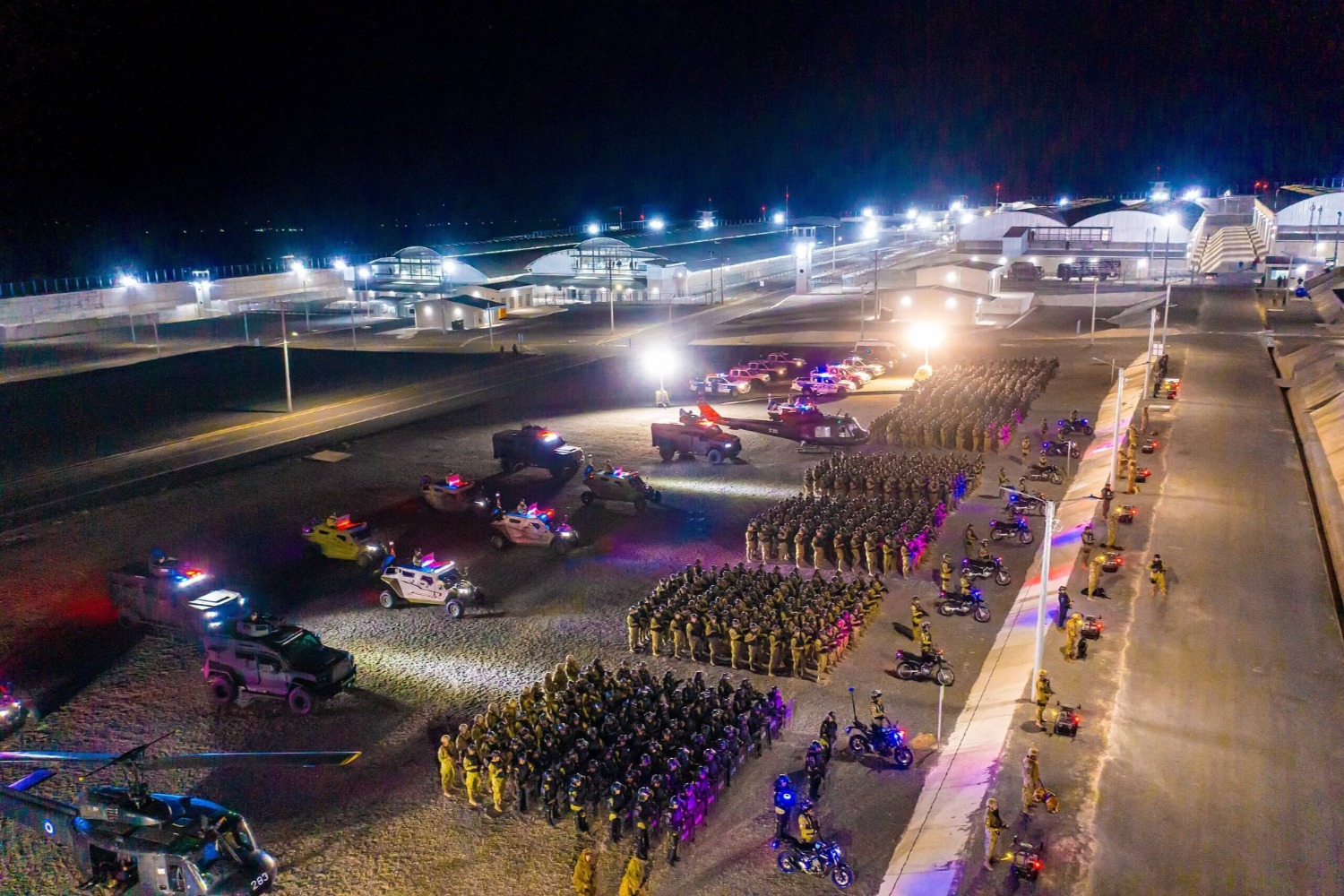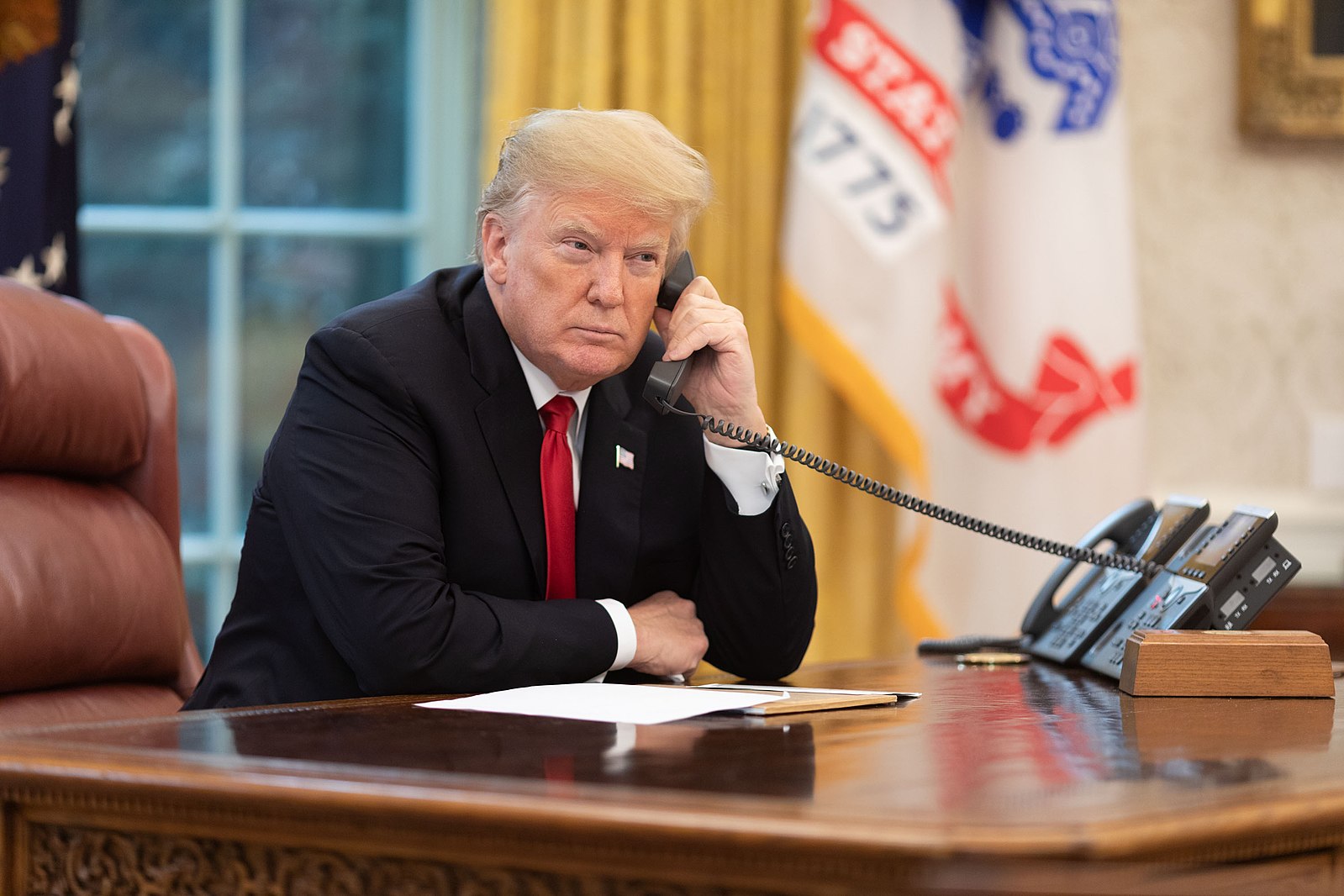Special Tribunal for Lebanon Hands Down Historic Verdict on Hariri Assassination Charges
A special tribunal finally ruled in the case about the bombing that killed former Lebanese Prime Minister Rafik Hariri. What did the judges find and what happens next?

Published by The Lawfare Institute
in Cooperation With

After 13 years of work, the Trial Chamber of the Special Tribunal for Lebanon (STL) on Aug. 19 issued a long-awaited judgment on the case it was primarily established to hear: the prosecution of several alleged Hezbollah members for a bombing in Beirut on Valentine’s Day 2005 that killed the former prime minister of Lebanon, Rafik Hariri, and 21 others and wounded more than 200 people.
The judgment was initially scheduled to be delivered in May but was delayed twice—first due to the coronavirus pandemic and second as a gesture of solidarity for the victims of the massive explosion in Beirut on Aug. 5, which devastated the city.
How Did We Get Here?
The Trial Chamber summarized its findings about the crime that gave rise to this case at the beginning of the public pronouncement of its judgment:
1. Just before 13:00 on Monday 14 February 2005, the former prime minister of Lebanon, Mr Rafik Hariri, was travelling in his convoy in Beirut between the Lebanese Parliament and his home, Quraitem Palace.
2. As it approached the St Georges Hotel, near the coast, a massive explosion was detonated. Mr Hariri was killed in the blast. Twenty-one others, including eight members of Mr Hariri’s convoy, and innocent bystanders, also died. Three of the victims died after the explosion, two on the following day, and the third, the Lebanese MP, Mr Bassel Fuleihan, succumbed after lying in a coma for two months.
3. At least another 226 people were injured, some very seriously. People passing in the street and working in nearby buildings sustained terrible injuries. Many buildings were badly damaged.
4. The explosion was triggered by a suicide bomber in a Mitsubishi Canter—a light tarpaulin covered truck, loaded with more than two tonnes of RDX high-grade explosives—that detonated as Mr Hariri’s heavily protected six vehicle convoy passed the St Georges Hotel. The explosives had the equivalent of 2,500 to 3,000 kilograms of TNT. The explosion left a crater in the road over ten metres wide and almost two metres deep.
The reaction to the bombing catalyzed a cascade of social movements and political shake-ups in Lebanon. More than a quarter of Lebanon’s population attended demonstrations, now called the Cedar Revolution, to demand Syrian withdrawal and an independent, international investigation into Hariri’s assassination. Two weeks after the blast, the pro-Syrian Lebanese prime minister resigned; less than three months later, all official Syrian forces withdrew from the country. On Aug. 17, Beth Van Schaak detailed the process that took us from the immediate aftermath of the crime to a hybrid tribunal. As she notes, the U.N. Security Council immediately formed an independent investigative commission to probe the bombing. After a request by the Lebanese government to establish a tribunal “of an international character” and despite Lebanon’s failure to ratify an agreement with the Security Council establishing the tribunal, the Security Council passed a resolution establishing the STL pursuant to its authority under Chapter VII of the U.N. Charter. The tribunal’s statute endowed it with jurisdiction over the assassination of Prime Minister Hariri, the harm to other victims of the attack, and “other attacks that occurred in Lebanon between 1 October 2004 and 12 December 2005, or any later date decided by the Parties and with the consent of the Security Council, [that] are connected in accordance with the principles of criminal justice and are of a nature and gravity similar to the attack of 14 February 2005.”
There are a few factors that make the STL stand out: its establishment by Chapter VII after an incomplete agreement between the Security Council and the Lebanese government; its use of trials in absentia, consistent with Lebanese law; its particular definition of the crime of terrorism under international law; its detailed use of electronic evidence from cell phones, including geolocation evidence; and its reliance on the historic analytical work of a Lebanese intelligence officer, Wissam Eid (who died in a car bombing himself shortly after sharing his work with the United Nations), which laid the foundation for the use of that evidence and the eventual case.
The first indictments in the Hariri case were filed in January 2011. In-court trial proceedings began in January 2014, and the parties presented closing arguments in September 2018. During the trial, the judges heard the evidence of almost 300 witnesses and admitted more than 3,000 exhibits into evidence. The judges noted in the summary of the Trial Chamber’s judgment that the case against the defendants was almost entirely circumstantial: Only one element of the case against one of four accused was based on direct evidence, and the judges found that evidence unreliable. Essentially, this left the prosecutors and judges to assemble a jigsaw puzzle with 3,000 pieces and then prove that there was no other reasonable way that the puzzle could be assembled.
What Did the Judges Find?
In an extensive and detailed judgment (the summary alone is almost 150 pages long, with 673 footnotes), the Trial Chamber unanimously convicted Salim Ayyash of conspiracy to commit a terrorist act, committing a terrorist act, intentional homicide and attempted intentional homicide for participating in a conspiracy to assassinate Hariri. The chamber unanimously acquitted three other defendants.
Perhaps aware of the likely controversy any verdict would provoke in Lebanon and the region, the judges took pains to explain their findings and reasoning. The public pronouncement of the judgment took more than four hours of court time to deliver—more than the combined time spent reading the two public judgment summaries for which I was in court at the nearby International Criminal Tribunal for the former Yugoslavia. The chamber explained its weighing of evidence in detail, at times noting that it was finding a fact was more likely than not to be true, but could not find that the fact was true beyond a reasonable doubt and so could not use it as a basis to convict.
Much public attention during the lengthy reading of the judgment summary centered around what the judges found about individuals who were not charged in the case. For example, a Reuters headline reported, “Lebanon trial judge: no evidence of involvement by Hezbollah leadership in Hariri’s killing.” Others noted the attention the judgment paid to findings about the role of Mustafaa Badreddine—a relative of Ayyash’s who had initially been charged but died during the trial, after which the Appeals Chamber terminated the proceedings against him. The Trial Chamber explicitly found it was “not satisfied” that he masterminded the attack, as the prosecution had initially charged.
But at least regarding the conspiracy issue, the judgment appears somewhat more nuanced than the headlines suggest. The Trial Chamber held that “[t]here is no evidence that the Hezbollah leadership had any involvement in Mr Hariri’s murder and there is no direct evidence of Syrian involvement in it.” Yet it nonetheless found a conspiracy to assassinate Hariri; found that conspiracy most likely involved members of a single organization; found Ayyash was part of the conspiracy; found Ayyash was a Hezbollah supporter; found Syria and Hezbollah had motives to remove Hariri from the Lebanese political scene; and found that the decision to commit the crime was made in the two weeks preceding the bombing, noting in that regard statements by Hariri and a group of opposition leaders who met at the Bristol Hotel, opposing Syrian involvement in Lebanon. In essence, the judges communicated that they think there are good reasons to think Syria and/or Hezbollah were responsible. There just wasn’t evidence available in this trial to prove it beyond a reasonable doubt.
What Happens Next?
There will likely be appeals of both the conviction and the acquittals, and one connected case is about to commence proceedings at the tribunal. Voices in Lebanon and elsewhere expressed frustration with the cost of the process and its limited results. In the United States, the State Department—while welcoming Ayyash’s conviction—noted that “Hezbollah operatives do not freelance,” suggesting the tribunal should have been able to attribute responsibility further up the chain of command. Some international criminal law experts agreed, and Marlise Simons and Ben Hubbard of the New York Times remarked that the tribunal “failed to answer even the most basic question: Who ordered the killing?” Others suggested that the ruling showed that international criminal law might be ill suited for terrorism cases.
The legacy of the tribunal will depend on how the 2,600-page judgment withstands appellate and historical scrutiny. But observers can draw some initial lessons.
First, the case depended heavily on high-tech evidence derived from cell phones, and the judgment reserves well over 1,000 pages to setting out principles for the evaluation of such evidence, analyzing attempts to show particular persons had control over particular cell phones, and establishing the functioning of the networks of cell phone users alleged by the prosecution. Technological evidence of this sort is a treasure trove for investigators and prosecutors: In recent years, observers have seen emphasis on cell phone or other electronic records by the United Nations Investigative Team to Promote Accountability for Crimes Committed by Da’esh (UNITAD), U.S. Supreme Court litigation holding that cell location evidence is protected by the Fourth Amendment, an International Criminal Court arrest warrant based heavily on social media evidence, litigation in American court to require Facebook to turn over records to facilitate investigations into allegations of atrocities by authorities in Myanmar against Rohingya Muslims, as well as the use of similar evidence in courts around the world.
The court’s detailed treatment of this evidence—and eventual conviction of Ayyash—illustrates its upside. But technological evidence isn’t a magic bullet. This is exemplified by the acquittals of the other defendants, and the lack of clear findings on who controlled any of the other cell phones in the various networks that the court found coordinated the surveillance and eventual assassination of Hariri. In many instances, this type of evidence is incredibly valuable circumstantial evidence and can significantly accelerate investigations, but prosecutors will often need to find and adduce additional contextual or direct evidence before a fact-finder is willing to find that the inculpatory inferences raised by technological evidence are the only reasonable ones. Based on the perpetrator groups under suspicion, the prosecution in this case likely faced massive challenges collecting evidence that could build on the cell records and assist the Trial Chamber in drawing the necessary inferences.
Second, the case highlights that international criminal trials are not cheap or brief—even when the defendants are charged with carrying out only one crime. Simple charges and uncontroversial processes rarely give rise to the need for an international court. While the Hariri case may have been an extreme example, there are generally no shortcuts to justice in complex cases.
Third, the discussion of whether any more senior figures than Ayyash could or should have been identified in the judgment illustrates a constant question about how far such high-profile cases should go beyond adjudicating the responsibility of specific defendants. Regardless, in this instance, it should not come as a great surprise that any particular individuals against whom the prosecution chose not to bring charges were not proved responsible.
Finally, the timing of the judgment is a reminder that transitional justice processes must work for the societies they aim to serve. The judgment comes at another challenging moment for Lebanon, in the aftermath of an explosion that killed well over 100 people and devastated Beirut. So far, despite public frustrations, reactions to the verdict in Lebanon have been peaceful. The international community must support peaceful reactions to the verdict and help maintain stability even as it helps Lebanon rebuild from its most recent tragedy.





